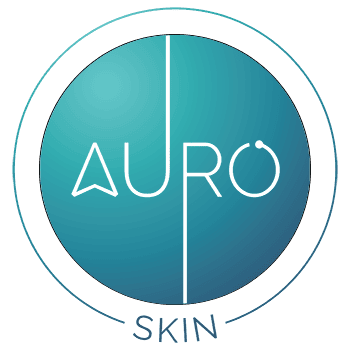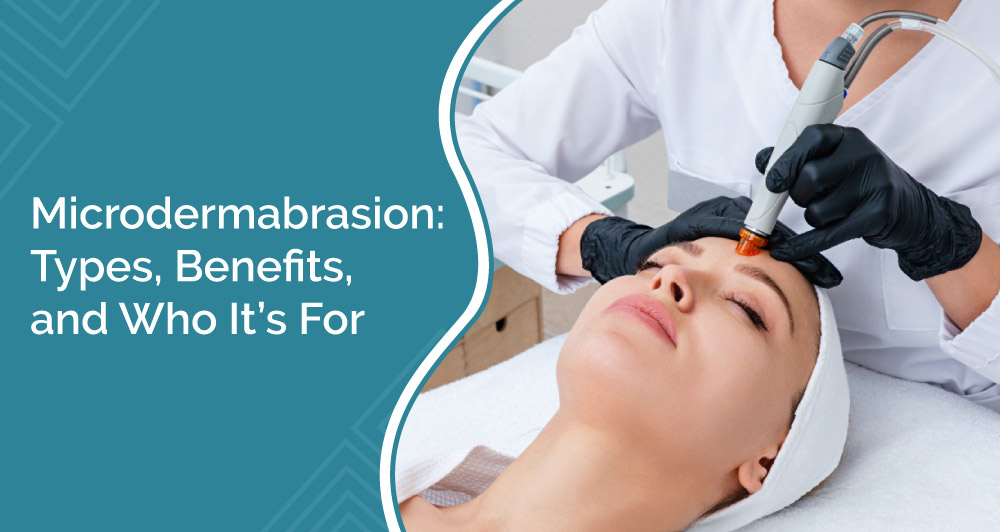April 15, 2025
Years of exposure to the sun, pollution, and everyday stress can affect the skin, making it dull, uneven, or tired-looking. Despite a regular skincare regime, achieving a fresh, bright appearance can be difficult. Microdermabrasion is a popular choice for individuals who wish to improve texture, lighten pigmentation, or revitalise dull skin without harsh chemicals or extensive recovery time.
In this blog, we are going to discuss how microdermabrasion facial treatment can make the skin smoother, brighter, and healthier.
A. What is Microdermabrasion?
Microdermabrasion is a non-surgical cosmetic skin treatment that gently removes dead skin cells. It exfoliates the skin’s top layer of dead skin cells with fine crystals or a diamond-tipped instrument to buff away the dead and dull skin. Microdermabrasion stimulates the skin’s natural regeneration process, encouraging collagen production to help reveal smoother and healthier skin. In contrast to more aggressive methods such as chemical peeling or laser resurfacing, microdermabrasion facial treatment is gentle, making it perfect for all skin types.
If you are searching for a low-risk solution to restore your skin’s appearance and address concerns like dullness, fine lines, and small pigmentation, microdermabrasion treatment could be an ideal solution.
B] Types of Microdermabrasion
1. Crystal Microdermabrasion
This is a classic type of microdermabrasion facial that uses a controlled stream of tiny crystals (usually aluminium oxide or sodium bicarbonate) that are sprayed onto the skin to exfoliate the outer layer. A vacuum then suctions the crystals along with the dead skin cells. It’s good for those who want to refresh their complexion or manage oily, acne-prone skin. The intensity can be adjusted based on the skin type and sensitivity.
2. Diamond Microdermabrasion
This newer technique involves a diamond-tipped wand that carefully scrubs the skin. It provides precise exfoliation that is ideal for sensitive spots such as near the eyes and lips. It’s suitable for those with delicate or mature skin who still desire the benefits of microdermabrasion treatment.
3. Hydra-Microdermabrasion
Also referred to as hydro-dermabrasion, this treatment combines exfoliation and deep hydration. It cleans the skin with hydrating serums with antioxidants, peptides or hyaluronic acid. It’s suitable for dehydrated, dull or tired skin and gives healthier skin without irritation. If you’re seeking something gentle yet very effective, this is one of the best types of microdermabrasion facials.
C] Benefits of Microdermabrasion
Here are the best microdermabrasion treatment benefits that one can expect:
1. Improved Skin Texture
Microdermabrasion gently removes dry spots and rough areas, making the skin soft and even to the touch. Regular treatments will improve the skin’s texture, making it look healthy and radiant.
2. Minimises Fine Lines and Wrinkles
As we age, collagen production decreases, causing fine lines. Microdermabrasion stimulates collagen production as it causes gentle trauma to the skin surface. The skin will heal itself, making fine lines and wrinkles less noticeable over time.
3. Acne Scar and Hyper-pigmentation Treatment
Dark spots and old acne scars are hard to fade. Microdermabrasion gently reduces pigment and smoothens shallow scars by stimulating skin turnover. After a few sessions, even stubborn marks can be reduced, revealing clearer skin.
4. Even Skin Tone
The uneven complexion, sun damage and dryness can make the skin look dull and tired. Microdermabrasion can benefit individuals with healthier and plump skin by removing the top layer of dead skin cells.
5. Reduces Pore Size
Large pores are filled with dead skin and oil. Microdermabrasion flushes them out and tightens the pores, making the skin smoother and more polished. With time, pores will be less noticeable and less prone to blackheads or breakouts.
6. Suitable for All Skin Types
Whether the skin is oily, dry or a combination, microdermabrasion can be done safely with almost no chance of irritation. It’s a treatment that works for most skin types when done by skilled practitioners.
7. Better Skincare Product Absorption
After dead skin is removed, serums and creams can penetrate deeper into the skin and work better. This means individuals can get better results from their existing skincare routine post-treatment.
D] Who is a Good Candidate for Microdermabrasion?
Microdermabrasion is ideal for individuals who want to improve the skin’s appearance while undergoing invasive treatments. The ideal candidates are individuals who have:
- Mild acne scars
- Sun-damaged skin
- Uneven tone or rough texture
- Dull, congested or tired-looking skin
Microdermabrasion facial treatment is a maintenance procedure that can be done at intervals to keep the skin refreshed. However, those with active acne, rosacea, eczema or extreme skin sensitivities should visit a skin expert. At Auro Skin Clinic, our skin specialists in Vile Parle thoroughly go through your skin requirements and ensure to give you the best results for aggravating current skin problems.
E] What Are The Other Treatments That Can Be Combined With Microdermabrasion
While microdermabrasion facial treatment provides amazing results for a range of skin ailments, it’s often combined with other aesthetic treatments to get the best results.
1. Chemical Peels
Chemical peels use medicines such as AHA, BHA, etc., to penetrate the skin layers and give the desired result. So, microdermabrasion can be performed first, and chemical peels immediately afterwards, depending on the need.
2. Laser Treatments
Laser treatments can treat deep pigmentation, scarring, and wrinkles. Microdermabrasion is combined with laser treatment to get optimum results and help you achieve healthy and clearer skin.
3. Dermaplaning
Dermaplaning and microdermabrasion both exfoliate the skin, but dermaplaning is manually removing peach fuzz hair. Microdermabrasion, however, utilises machines and provides a controlled exfoliation.
Still unsure which to choose? Speaking with a professional can help clarify what’s best for your individual skin needs. At Auro Skin Clinic, we offer the best skin treatment in Mumbai to help you achieve your desired results.
Conclusion
Smooth and radiant skin does not have to be a dream. With the right treatment plan and expert care, even persistent skin issues can be improved safely and effectively. Whether you’re dealing with uneven tone, dullness, or early signs of aging, professional exfoliation treatments can help reveal healthier skin.
At Auro Skin Clinic, each treatment is tailored by our experienced dermatologists, who are aware of your skin’s specific issues. Book an appointment with us and discover how we can help you achieve clearer, smoother and healthier skin without compromising on comfort and safety.

